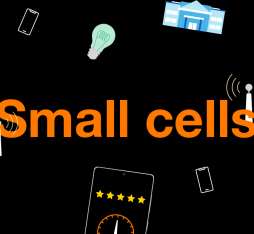The NESTED project—offering a promising solution to limit the energy-consuming impact of digital technology—is being presented by Orange at their stand at the Mobile World Congress 2023. This innovation is able to reduce network congestion by automatically switching video streaming formats (unicast/multicast) according to the available stream and number of users. It is also able to optimize resolution by taking into account the screen being used. The energy consumption of devices and network equipment will be considerably reduced while maintaining the same quality for the user.
The NESTED ecosystem offers a user experience similar to the one we have today, but with more energy-efficient technology.
Compression by Other Means
The NESTED project, which stands for “New vidEo STandards for Enhanced Delivery,” is the result of a collaboration between different partners. Orange, through its subsidiary Viaccess-Orca, handles the player part, which contains the VVC (versatile video coding) decoder designed by the French Institut d’électronique et des technologies du numérique (Institute of Electronics and Digital Technologies), also known as the IETR. ENENSYS is in charge of the unicast/multicast part, as well as the receiver installed in different devices (smartphones, tablets, smart TVs, set top boxes, etc.). This consortium is led by Ateme, a company specialized in video compression and delivery, who initiated the project in order to minimize the growing impact of video traffic on networks, thus enabling the delivery of high-quality services while protecting the environment.
Agnostic Technology
5G requires streams to be received in pure (over-the-top), which increases the load on the network if you want to receive traditional TV channels. “NESTED’s goal is to reduce the impact of transmission on the network,” Mickaël Raulet, CTO at Ateme, explained. “To achieve this, we used properties around the CMAF (Common Media Application Format) containerization. Our interest in this format, which was jointly initiated by Microsoft and Apple and standardized by MPEG, is down to its compatibility with all Android and iOS devices.” Ateme has also implemented a new VVC/H.266 codec that allows it to halve the video bit rate when compared to the state-of-the-art HEVC/H.265. The advantage? By halving the bit rate on the network, VVC reduces the carbon impact of video distribution. “We are using a new codec to anticipate what the multimedia streaming of tomorrow will look like. That’s why this innovation chain comprising NESTED, CMAF and multicast is made up of agnostic technologies — they can work with any other type of codec,” said Raulet.
Energy Efficiency
At the other end of the chain, Viaccess-Orca steps up to the plate with its secure video player. “In the NESTED ecosystem, our player is able to offer a user experience similar to the one we have today, but with more energy-efficient technology,” explained Guillaume Debeneix, a Demo Success Manager at VO. The energy saving comes from NESTED’s ability to seamlessly switch from one method of streaming to another — from unicast, where each stream is transmitted individually, to multicast, where the same stream is sent to multiple users. “This switch occurs during video playback, with no visual impact for the user.”
User Involvement
The second innovation is the VO secure video player’s eco-friendly mode. “Nowadays, you can watch 4K on your smartphone. But this is irrelevant because, even with a lower resolution, you will have a similar perception. Therefore, our player lets users take charge by choosing a resolution that is better suited to their device and, where required, more energy efficient,” said Patrice Angot, Studies and Prototype Engineer at VO. At this stage of the project, the new player is able to evaluate the energy consumption of the microprocessor related to the video viewing in real time. Soon, it will also be able to take into account the energy consumption of the modem, the screen, etc. This will enable it to provide precise information to users, allowing them to adapt their way of watching videos.
Technology Designed for 5G
Launched two years ago, the development of the NESTED project will come to an end in May 2023. Most of its advances will be able to be used on current devices after a simple software update. However, this solution will reach its full potential in three to five years’ time, as part of SA (standalone) 5G.
An OTT (over-the-top) platform is a service that streams live or pre-recorded videos or programs to any device connected to the Internet. For example, this includes streaming applications as opposed to traditional television services (TNT, cable, satellite and IPTV).
Encapsulation is the process of gathering data and methods within a structure whose implementation is masked. In this way, data integrity is assured as access to the interface is controlled and protected.















